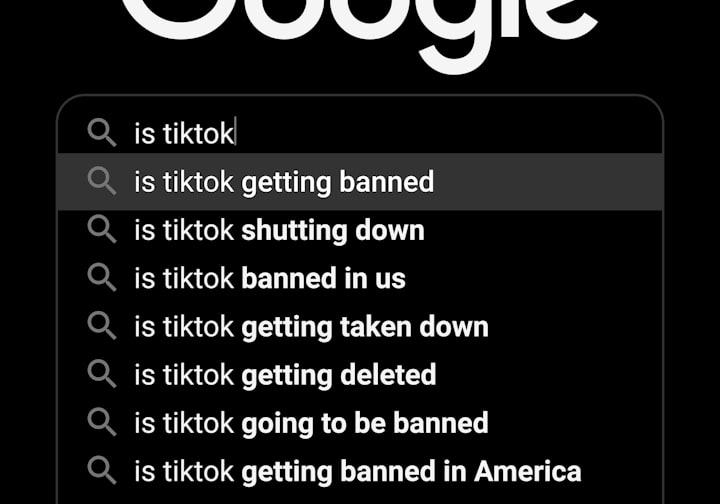Navigating Social Media Bans
Strategies for Digital Marketers
This article explores the impact of social media bans on digital marketing, including how bans can affect marketing strategies, recent instances of bans, strategies to adapt to bans, the impact on online advertising budgets and ROI, alternative platforms for digital marketing, the effects on marketing objectives, analyzing the consequences of bans, recommendations for policymakers and businesses, balancing traditional and digital marketing, and the future outlook for digital marketing.
Overview of Social Media Bans in Digital Marketing
Social media bans have become a prevalent issue impacting digital marketing strategies across various industries. The prohibition or restrictions imposed on social media platforms can disrupt businesses' marketing efforts and consumer engagement, leading to significant challenges in maintaining brand visibility and reaching target audiences effectively. For instance, when India banned TikTok and other Chinese apps, it affected numerous businesses that relied on these platforms for advertising and customer interaction. The sudden loss of access to a popular marketing channel forced businesses to adapt quickly to alternative platforms to sustain their online presence and continue engaging with their customers.
Moreover, the role of social media in modern advertising campaigns has become increasingly essential, with businesses leveraging these platforms to promote products, engage with consumers, and build brand loyalty. The impact of social media bans can vary depending on whether the ban is partial or complete, with each scenario presenting unique challenges for marketers. For example, a partial ban on a specific social media feature may require businesses to adjust their content strategies, while a complete ban on a platform necessitates a complete overhaul of marketing tactics and channel diversification to mitigate the impact on brand recognition and customer relationships.
The comparison between the effects of partial bans versus complete bans on digital marketing outcomes highlights the need for businesses to develop contingency plans and adapt their strategies to navigate the changing landscape of social media bans effectively. By understanding the nuances of different types of bans and their implications, businesses can proactively address challenges, reallocate resources, and explore alternative marketing channels to minimize disruptions and maintain a competitive edge in the digital marketing arena.
Recent Instances of Social Media Bans
Recent instances of social media bans have underscored the vulnerability of digital marketing campaigns to regulatory actions and platform restrictions, affecting businesses across various sectors. For example, Indonesia's ban on e-commerce transactions through social media platforms had far-reaching consequences for local merchants and online marketplaces, raising concerns about fair competition and consumer choice. The ban aimed to protect small businesses and traditional markets but highlighted the delicate balance between regulatory intervention and market innovation.
In response to the potential ban on TikTok in the U.S., marketers had to reassess their marketing strategies and explore alternative platforms to ensure continuity in their campaigns. This strategic shift exemplifies the agility required by businesses to adapt to unforeseen regulatory changes and maintain their market presence. Furthermore, the implications of social media bans on e-commerce transactions and digital advertising highlight the need for businesses to diversify their marketing channels and explore innovative ways to engage with consumers in a rapidly evolving landscape.
Additionally, the responses of marketers to different types of social media bans provide valuable insights into the resilience and adaptability of businesses in the face of regulatory challenges. By studying these responses and the strategies employed by marketers to overcome bans, businesses can glean important lessons on preparedness, flexibility, and the importance of staying attuned to industry trends and regulatory developments to safeguard their marketing efforts in an uncertain regulatory environment.
Strategies to Adapt to Social Media Bans
Adapting to social media bans requires businesses to employ innovative strategies and agile approaches to maintain their marketing effectiveness and consumer reach. Case studies of successful adaptation strategies by businesses facing social media bans offer valuable lessons on resilience and flexibility in the digital marketing landscape. For instance, when faced with a ban on a popular social media platform, companies have leveraged influencer marketing, email campaigns, and SEO strategies to diversify their marketing channels and mitigate the impact of the ban on their brand visibility and customer engagement.
Influencer marketing has emerged as a powerful tool for businesses to navigate the challenges posed by social media bans and reach their target audience through alternative channels. By collaborating with influencers who have a strong online presence and a loyal following, businesses can amplify their brand messaging, drive traffic to their website, and maintain customer relationships even in the absence of certain social media platforms. This strategic shift toward influencer marketing exemplifies the creative approaches adopted by businesses to adapt to bans and leverage new opportunities in the digital marketing sphere.
Furthermore, the importance of diversifying marketing channels to reduce vulnerability to bans cannot be overstated in today's digital landscape. Businesses that rely solely on one or two social media platforms for their marketing efforts are at a higher risk of being adversely affected by bans or restrictions. By exploring a mix of channels such as email marketing, content marketing, and search engine optimization (SEO), companies can establish a robust online presence and engage with their audience across multiple touchpoints. This diversification not only enhances brand resilience but also enables businesses to adapt swiftly to regulatory changes and consumer preferences, ensuring sustained growth and market relevance.
Impact on Online Advertising Budgets and ROI
The correlation between social media bans and online advertising budgets is a critical consideration for businesses seeking to optimize their marketing investments and achieve a favorable return on investment (ROI). When bans are enforced on popular social media platforms, companies may experience fluctuations in their advertising budgets as they reallocate resources to alternative channels to maintain their marketing objectives. For example, brands that previously allocated a significant portion of their advertising budget to TikTok had to pivot to other platforms like Instagram or YouTube to sustain their online visibility and engagement levels following a potential ban.
Moreover, the examples of brands that have experienced changes in ROI due to social media bans highlight the need for businesses to monitor and analyze the impact of bans on their marketing performance. By tracking key metrics such as website traffic, conversion rates, and customer engagement before and after a ban, companies can assess the effectiveness of their adjusted strategies and make data-driven decisions to optimize their ROI. This analytical approach enables businesses to identify areas of improvement, capitalize on new opportunities, and mitigate the financial risks associated with social media bans on their advertising budgets.
Additionally, the influence of bans on the allocation of advertising budgets across different platforms underscores the dynamic nature of digital marketing strategies in response to regulatory changes. Companies may need to redistribute their marketing investments across a mix of channels, including paid search, display advertising, and social media, to diversify their reach and maximize their impact. By adopting a flexible budgeting approach and staying agile in their marketing tactics, businesses can navigate the uncertainties associated with social media bans and ensure a balanced and effective allocation of resources to achieve their advertising goals.

Alternative Platforms for Digital Marketing
In light of social media bans, businesses are exploring alternative platforms to sustain their digital marketing efforts and engage with their target audience effectively. Evaluating the effectiveness of alternative platforms such as Facebook and YouTube for marketing purposes is crucial in mitigating the impact of bans on brand visibility and customer engagement. For example, companies that have been affected by bans on specific social media platforms have diversified their marketing strategies by leveraging the reach and engagement opportunities offered by Facebook and YouTube to connect with their audience and promote their products or services.
Moreover, the analysis of the challenges faced by businesses in transitioning to alternative platforms post-ban highlights the complexities involved in adapting to new marketing channels. From understanding platform algorithms to tailoring content for different audience demographics, businesses must navigate various hurdles to ensure a seamless transition and maintain a consistent brand presence across platforms. Despite these challenges, the shift to alternative platforms presents opportunities for businesses to explore innovative marketing techniques, engage with a broader audience, and enhance their online visibility beyond the confines of banned social media networks.
Furthermore, comparing audience engagement levels on banned platforms versus alternative platforms sheds light on the varying dynamics of consumer interaction and brand communication across different digital channels. By analyzing audience behaviors, preferences, and response rates on alternative platforms, businesses can tailor their marketing strategies to resonate with their target demographic effectively. This targeted approach not only helps companies adapt to social media bans but also enables them to optimize their marketing efforts, drive conversions, and foster long-term customer relationships in an evolving digital landscape.
Social Media Ban Effects on Marketing Objectives
The impact of social media bans on marketing objectives extends beyond immediate visibility and engagement concerns, affecting brand perception, consumer trust, and revenue generation. When businesses are unable to communicate promotions, product launches, or engage with their audience through banned social media platforms, it can lead to a decline in brand recognition and customer loyalty. For instance, a company that relies heavily on Instagram for showcasing new products may face significant challenges in reaching its target audience and driving sales if the platform is banned or restricted in certain regions.
Furthermore, the examples of marketing objectives that may be compromised by social media bans underscore the need for businesses to realign their strategies and goals to adapt to changing regulatory landscapes. Objectives related to brand awareness, customer acquisition, and lead generation may need to be revisited and adjusted to account for the limitations imposed by bans on popular social media platforms. By redefining their marketing objectives, companies can pivot towards alternative channels, explore new creative approaches, and maintain a competitive edge in the digital marketing arena despite regulatory uncertainties.
Moreover, the strategies for realigning marketing objectives to adapt to bans emphasize the importance of strategic planning, agility, and consumer-centricity in navigating regulatory challenges. Businesses that proactively reassess their marketing objectives, prioritize customer needs, and leverage data-driven insights to inform their decision-making can effectively mitigate the impact of social media bans on their bottom line. By staying agile, responsive, and customer-focused, companies can position themselves for long-term success in a dynamic digital landscape where regulatory changes are increasingly shaping marketing priorities and strategies.
Analyzing the Consequences of Social Media Bans
An in-depth analysis of the consequences of social media bans reveals a spectrum of effects on consumers, businesses, and the digital marketing ecosystem at large. One significant aspect to consider is the psychological effects of bans on consumer behavior, with individuals experiencing feelings of isolation, anxiety, or FOMO (fear of missing out) when they are unable to access their preferred social media platforms. For businesses, these psychological impacts can translate into reduced consumer engagement, lower brand loyalty, and challenges in maintaining meaningful connections with their target audience.
Moreover, the case studies illustrating the financial repercussions of bans on businesses shed light on the economic implications of regulatory actions on the digital marketing industry. Companies that heavily rely on social media for advertising and customer outreach may face a sudden decline in reach, conversions, and revenue when faced with bans or restrictions. For example, a ban on a popular platform like TikTok can disrupt marketing campaigns tailored to that audience, leading to a loss in brand exposure and potential sales. This underscores the need for businesses to diversify their marketing channels, explore alternative strategies, and invest in resilient marketing tactics to weather the challenges posed by social media bans.
Additionally, the overview of the legal implications of social media bans for marketers emphasizes the importance of compliance, transparency, and ethical practices in digital marketing. As regulations evolve and bans are enforced on certain platforms, companies must stay informed, adapt their strategies, and ensure that their marketing practices align with legal requirements and industry standards. By proactively addressing legal considerations, businesses can mitigate risks, build trust with consumers, and uphold their reputation in an increasingly regulated digital environment.
Recommendations for Policymakers and Businesses
Collaboration between policymakers and businesses is essential in navigating the complexities of social media bans and ensuring a balanced regulatory environment that fosters innovation, consumer protection, and industry growth. Policymakers can implement best practices for regulating social media bans, drawing insights from industry stakeholders, and research to develop policies that safeguard businesses and consumers while promoting a competitive and dynamic digital ecosystem. For instance, policymakers can work closely with businesses to understand the challenges posed by bans, gather feedback on regulatory proposals, and tailor interventions that balance industry needs with consumer interests.
Furthermore, the strategies for businesses to collaborate with policymakers underscore the importance of advocacy, engagement, and proactive involvement in shaping regulatory frameworks. By participating in industry forums, policy discussions, and regulatory consultations, businesses can contribute valuable insights, share best practices, and advocate for policies that support innovation, competition, and responsible digital marketing practices. This collaborative approach empowers businesses to influence regulatory decisions, prepare for potential bans, and navigate the evolving regulatory landscape effectively.
Moreover, the importance of proactive measures in preparing for potential bans highlights the need for businesses to anticipate regulatory changes, diversify their marketing strategies, and invest in resilient practices that can withstand regulatory scrutiny. By staying informed, monitoring industry trends, and engaging with policymakers early on, businesses can proactively address regulatory risks, mitigate the impact of bans on their marketing efforts, and position themselves for sustained growth and success in a rapidly evolving digital marketing environment. This forward-thinking approach not only enhances business resilience but also fosters a culture of compliance, innovation, and ethical marketing practices that benefit both businesses and consumers.
Balancing Traditional and Digital Marketing
The integration of traditional and digital marketing strategies has emerged as a key priority for businesses seeking to navigate the challenges of social media bans and optimize their marketing effectiveness. By blending traditional marketing practices with innovative digital approaches, companies can leverage the strengths of each channel to reach a wider audience, drive engagement, and achieve their marketing objectives. For example, successful campaigns by brands like Nike have demonstrated the power of integrating television and print advertisements with digital strategies on social media platforms to amplify brand messaging and connect with consumers globally.
Moreover, companies like Coca-Cola have effectively balanced traditional marketing methods such as billboard ads and television commercials with digital campaigns on social media to engage with diverse demographics and enhance brand visibility. This strategic alignment of traditional and digital marketing channels enables businesses to maximize their reach, resonate with consumers across various touchpoints, and create a cohesive brand experience that drives customer loyalty and brand advocacy. By striking a harmonious balance between traditional and digital marketing, companies can adapt to changing consumer behaviors, regulatory trends, and technological innovations, positioning themselves for sustained growth and market leadership.
Additionally, strategies for leveraging traditional marketing channels to complement digital initiatives offer businesses insights into optimizing their marketing mix, enhancing brand presence, and driving conversions. By integrating offline tactics such as event sponsorships, direct mail campaigns, and outdoor advertising with online strategies like social media marketing, content creation, and influencer partnerships, companies can create a holistic marketing approach that engages consumers at every touchpoint. This omnichannel strategy not only diversifies marketing efforts but also maximizes brand exposure, customer engagement, and conversion opportunities across the digital and physical realms.
Conclusion and Future Outlook
In conclusion, the impact of social media bans on digital marketing strategies is profound, requiring businesses to adopt agile, innovative, and consumer-centric approaches to navigate regulatory challenges and maintain their competitive edge in the digital landscape. The examples and insights shared in this article underscore the importance of strategic planning, diversification of marketing channels, and collaboration between policymakers and businesses in addressing the implications of social media bans on brand visibility, consumer engagement, and marketing effectiveness.
Looking ahead, businesses must continue to monitor regulatory developments, leverage emerging technologies, and adapt their marketing strategies to align with changing consumer behaviors and industry trends. By embracing a hybrid approach that balances traditional and digital marketing methods, companies can future-proof their marketing strategies, enhance brand resilience, and drive sustained growth in an evolving digital ecosystem. As social media bans continue to shape the digital marketing landscape, businesses that prioritize adaptability, creativity, and ethical practices will be well-positioned to thrive in a dynamic and competitive market environment.
About the Creator
Timothy A Rowland
I’m an every day human Xennial from the United States. I have many interest. I just want to improve your life and maybe entertain you. Available for editing and LeadsLeap projects at: https://www.fiverr.com/greyhatcompany







Comments
There are no comments for this story
Be the first to respond and start the conversation.